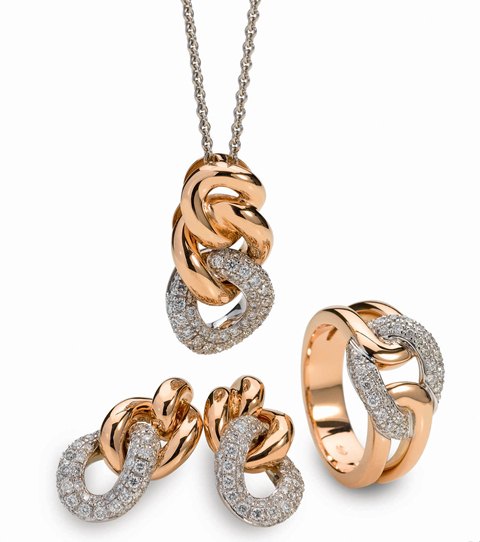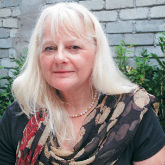[img_gallery][/img_gallery]
Many people know of the famous German firms operating in Penang today, such as B.Braun, Robert Bosch, OE Fine Jewellery, Schenker and Siemens, but not everyone realises that the German presence in Penang dates back several centuries and spanned across mercantile, cultural and architectural spheres. Frances Wilks explores the rich heritage and history of the German Penang Story.
The Germans and the Evolving Penang Story
A traditional Oktoberfest was recently held in the grounds of the MGS (Malaysian-German Society) in Penang for the 41st time. Popular with expats and also with a growing number of locals, the two-day festival celebrates the traditional music, food, beer, and ‘gemutlichkeit’ for which the original Bavarian festival has become so famous.
It’s part of the Penang Story – the rich tapestry of migrants who came here to establish businesses but ended up leaving indelible cultural legacies on the island. But the story really began two centuries ago – when German merchants settled here and established trading houses and shipping lines. You can see the their heritage today in some of Penang’s most famous buildings, designed by German architect Neubronner, and in some of Penang’s street names, such as Lebuh Katz, and Gottleib Road. Lebuh Katz was named after the German-born Katz brothers, who founded Katz Brothers Ltd. in 1864 and Gottlieb Road was named after Felix Henri Gottlieb (1827 – 1893). He was a distinguished lawyer who served in the Straits Settlements government from 1846 to 1882 before going into private practice. He endowed a “Gottlieb Scholarship” at Penang Free School and was also a prominent freemason.
Weld Quay and the German Merchants
One of the most enduring architectural legacies of the early period of German influence can be seen in the buildings of Weld Quay. The original beachfront of Penang was at Beach Street but in the 1880s, land was reclaimed and Weld Quay constructed. The rise of the German shipping company Nord Deutscher Lloyd gave German merchants a competitive edge in the lucrative Far Eastern trades of the time, especially tin and tobacco. Along the Quay, German merchants established fine buildings which still survive today although they have been repurposed over time variously as a boutique hotel, a language school, a training centre, a restaurant, and a museum. It’s also an important part of the German Heritage Trail.
The Behn Meyer Building is a historic building at No. 3 Weld Quay, in George Town, Penang. Behn Meyer is a European Trading company founded by two Germans from Hamburg, August Behn and Valentin Lorenz Meyer, in Singapore in 1840. The company opened its branch in Penang in 1891, and built its offices on the newly laid Weld Quay. It was one of the European trading houses facing the new waterfront, occupying the lot between Schmidt, Küstermann & Co to its left, and Schiffmann, Herr & Co to its right.
Architects and Photographers
Just round the corner in Beach Street, you can see the work of Alfred Neubronner. He was the first 20th century architect to give Penang an image befi tting its status as an international seaport and was responsible for Penang’s early 20th century landmarks such as the RBS Bank building, the HSBC building and the Kapitan Keling Mosque. Besides being an architect, he was an excellent sportsman, baritone singer and water-colour painter.
We owe much of our knowledge about what George Town looked like in those early years to a German, Ernst August Kaulfuss, who arrived in Penang in 1883, and set up a photographic studio. Using the sophisticated techniques of German lithography, he produced a range of postcards of Penang scenes, which are now collectible objects.
The Third Wave
Before the First World War, the Germanspeaking community probably formed the second largest European trading community in the Straits Settlements, after the British. Their continued prosperity were interrupted by the two World Wars, in which they lost what they had built for themselves.
The present German community in Penang is the third wave of Germans establishing a community here, which continues to contribute enormously to its economic development as well as enriching its cultural scene. In the early 1970s, several German firms, such as OE Jewellery, Bosch, Siemens, and B.Braun were among the pioneers to invest in Penang’s then newly opened Bayan Lepas Free Trade Zone. They have played their part in the renaissance of Penang and are supporters of the MGS who, as well as providing language classes, host the Oktoberfest and an annual ball in May. The next Mai Ball will be held on 17th May 2014 and will be supported by the TEG (The Expat Group), the IWA (the International Women’s Association), and the af (alliance française).
References
The German Heritage Trail in Penang – booklet published by the Penang Heritage Trust, sponsored by the German Embassy, Kuala Lumpur.
‘More than Merchants, A history of the Germanspeaking community in Penang, 1800s – 1940s’ Khoo Salma Nasution (2006) Areca Books, Penang.
———————————————————————————————————————
The OE Story

In the early 1970s, several German firms were among the first pioneers to invest in Penang’s then newly opened Bayan Lepas Free Trade Zone. The combination of local talent with expat expertise has resulted in worldclass products. While companies like Bosch, Siemens and B.Braun dealt in electronics and healthcare, OE Jewellery introduced something that was totally new to the island at that time – large-scale manufacture of jewellery of international standards.
OE stands for Oeding-Erdel, the family business that was founded in Germany in 1906. Starting from scratch in 1974 in Penang, OE Fine Jewellery brought in the necessary technology and human expertise in the form of German expatriates to train the locals on jewellery making. It has been a fruitful partnership. Today, the company is so well entrenched in the local scene that its Chairman, Dato’ Herbert Weiler, has even settled in Penang and also serves as the Honorary Consul for Germany.
Although the designs have changed over the years from the intricate shapes of the 1980’s to the more innovative contemporary look today, its hallmark is timeless elegance. It attracts a customer base from Europe as well as America, Australia and the Middle East. It’s also popular in Malaysia and there are many designs that reflect Asian cultural themes. You can see OE Jewellery at Straits Quay and also at the OE Factory Outlet on the 4th Floor of Wisma Binjul, Jalan Tanjung Tokong.
Janet Khew
-Evolution of OE Style-
———————————————————————————————————————
A German Writer Visits Penang
In 1911, Hermann Hesse, the author of the The Glass Bead Game and 1946 Nobel Prize winner, visited Penang, staying at the E & O Hotel. It was part of his own “journey to the East”. He found George Town “quaintly pleasant, a pseudo-classical style in public and commercial buildings; the Chinese houses simple, light, nice.” He enjoyed “a wonderful rickshaw ride through the city: everywhere ablaze with life, Chinese and Malay and Hindu streets, shops, craftsmen, small merchants, main Chinese, tea houses, gambling houses, prostitutes of all races.” Quoted in More than Merchants by Khoo Salma Naustion (Areca Books).
He also visited a Malay opera and went up Penang Hill. He actually climbed up the hill on foot (it was before the railway was built) all the way to the Crag Hotel and then returned via Ayer Itam where he described the Kek Lok Si Temple as “big and grotesque” before unexpectedly finding a tram that took him all the way back to George Town.
Source: Penang International December 2013/January 2014
Read more:
What are your thoughts on this article? Let us know by commenting below.No registration needed.
"ExpatGo welcomes and encourages comments, input, and divergent opinions. However, we kindly request that you use suitable language in your comments, and refrain from any sort of personal attack, hate speech, or disparaging rhetoric. Comments not in line with this are subject to removal from the site. "






















